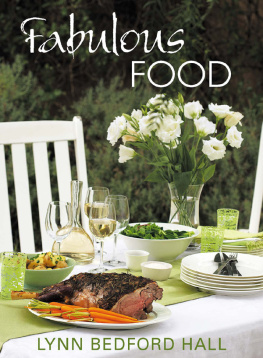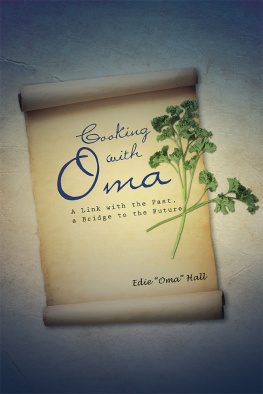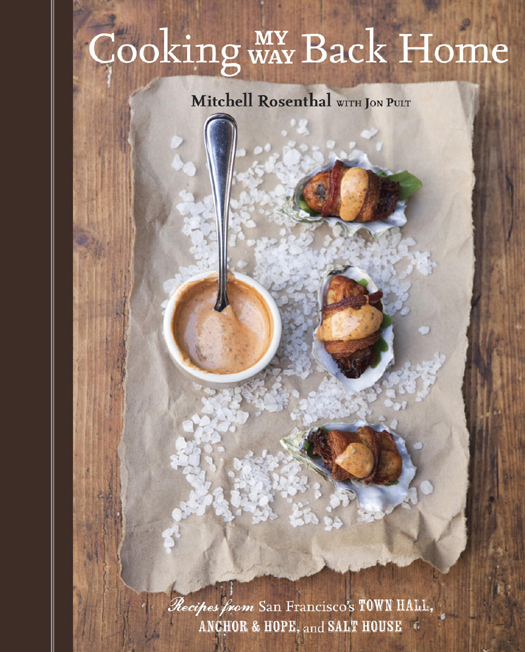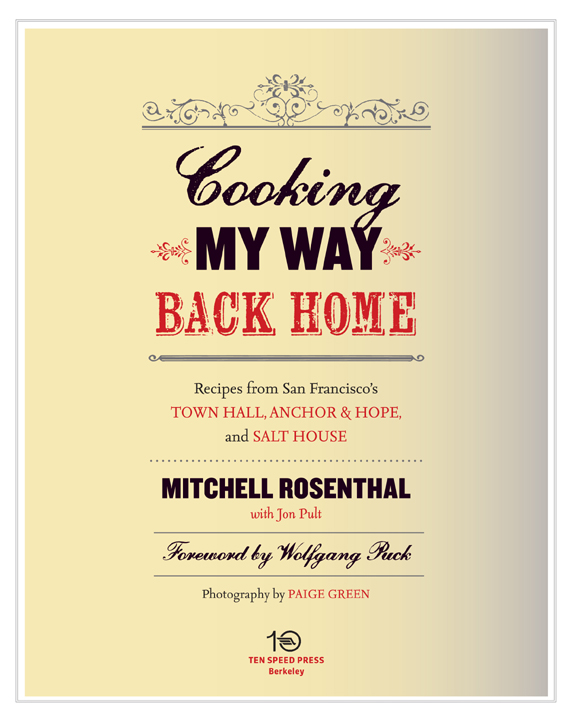
Copyright 2011 by Mitchell Rosenthal with Jon Pult
Photography copyright 2011 by Paige Green
Foreword copyright 2011 by Wolfgang Puck
All rights reserved.
Published in the United States by Ten Speed Press,
an imprint of the Crown Publishing Group, a division of Random House, Inc., New York.
www.crownpublishing.com
www.tenspeed.com
Ten Speed Press and the Ten Speed Press colophon are registered trademarks of Random House, Inc.
Library of Congress Cataloging-in-Publication Data
Rosenthal, Mitchell, 1960
Cooking my way back home : recipes from San Franciscos
Town Hall, Anchor & Hope, and Salt House / by Mitchell Rosenthal with Jon Pult;
photography by Paige Green.
p. cm.
eISBN: 978-1-60774-078-0
1. Cooking, AmericanCalifornia style. 2. Cooking, AmericanSouthern style.
3. Town Hall (Restaurant : San Francisco, Calif.)
4. Anchor & Hope (Restaurant) 5. Salt House (Restaurant)
6. Cookbooks. I. Pult, Jon, 1966- II. Title.
TX715.2.C34R67 2011
641.59794dc22
2011011631
v3.1
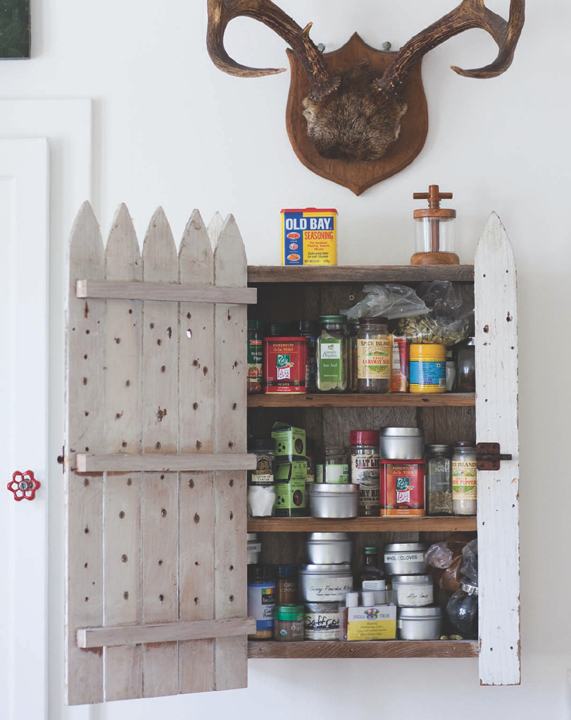

CONTENTS


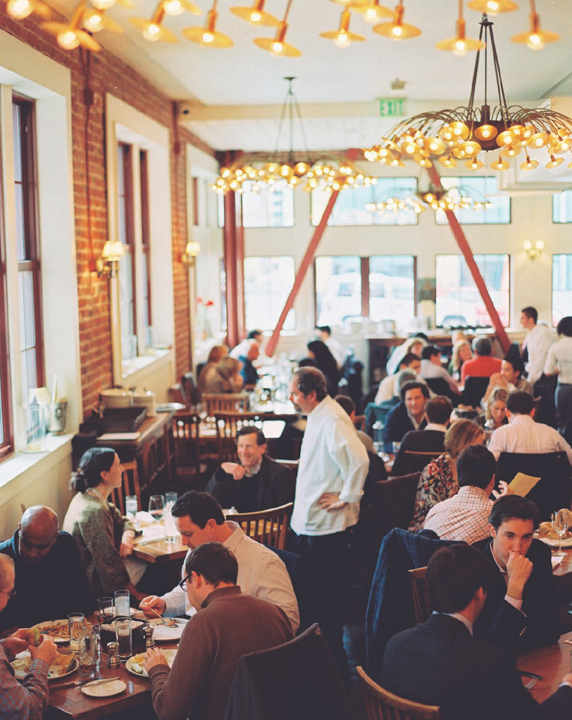
FOREWORD
By Wolfgang Puck
I N 1989, I GOT A CALL FROM MY OLD FRIEND SEPPI RENGGLI , the legendary executive chef of The Four Seasons in New York. He told me he knew a very talented young guy who had cooked under him, and thought that maybe this budding chef could bloom in California, especially with his love of new ingredients and cuisines from around the world.
Thats how I first heard of Mitch Rosenthal. The moment I met him, I was impressed not only by his talent and his enthusiasm for cooking good food but also by how much he knewespecially for someone who was basically self-taught, having risen from a New Jersey deli to apprentice in some of the finest kitchens in the country.
Mitchs mind was wide open to new experiences, a quality I love to see not only in cooks but in people in general. I liked him immediately.
I hired Mitch as a sous-chef on the opening kitchen team in my new San Francisco restaurant, Postrio. A year later, he left us to soak up even more culinary experiences, traveling in Asia and Europe. I was sorry to see him go, so when he returned to the United States I immediately offered him a job at my seafood restaurant Granita in Malibu, where the guests enjoyed so many of his exciting new dishes inspired by Mitchs travels.
In 1994, I offered Mitch and his brother, Steve, the opportunity to take over the kitchen of Postrio as its executive chefs. Even though he is someone so in love with travel and new experiences, Mitch stayed for eight years. Maybe that was because, though both brothers are great cooks, Steve took care of the management side of things, leaving Mitch to keep experimenting and trying new things at the stove.
What amazed me most about Mitch in his years at Postrio was what a positive influence he was on all the cooks around him. He was a good motivator, getting his young crew excited and always on the lookout for the best ingredients. Mitch has that rare ability to make other people feel the same passion he feels for good food.
I think Mitchs ability to share his passion in the kitchen is what makes his book, Cooking My Way Back Home, such a rare and wonderful experience for home cooks.
Mitch is a man who likes big flavors and sharp contrasts of taste and texture in the food he cooks, and he understands the best ways to combine and cook great ingredients to get such bold effects. After all, this is a guy who once served Cajun food in a Jewish deli!
Mitch has traveled the world, and he brings its influences back to his kitchen. He has a very good touch with seasonings, introducing a wide spectrum of flavors to his food. Theres never a boring moment in Mitchs cooking; its always exciting and full of discovery. That sense of excitement and discovery is why so many people love his restaurants. And that is why you will enjoy this book.
Looking through its pages, I find so many dishes I would love to eat right now, because I already know how good they taste. You dont have to be Jewish to enjoy his Grandmas Chopped Chicken Liver. His interpretation of Chicken and Andouille Sausage Gumbo is as good as anything you could find in Louisiana. As for his Bacon-Wrapped Stuffed Quail with Clams, I remember thinking when he first made that dish for me that it would be a strange combination; but I ended up eating two orders, marveling at how it reminded me of something you might find along the coast of Portugal or the Mediterranean, a perfect dish for San Francisco. And his Chocolate Butterscotch Pot de Crme from Town Hall is what every dessert should measure up to: Chocolaty, creamy, and rich with caramel, it has all of my favorite sweet flavors combined in one spectacular yet simple recipe.
It all tastes so good, and the recipes are so well written that you will get great results. Its nothing less than I would expect from Mitch Rosenthal. He has every reason to be satisfied with what he has accomplished. And yet, as he always has, Mitch just keeps on looking for new tastes, continues to experiment, always coming up with exciting new dishes for us all to try.
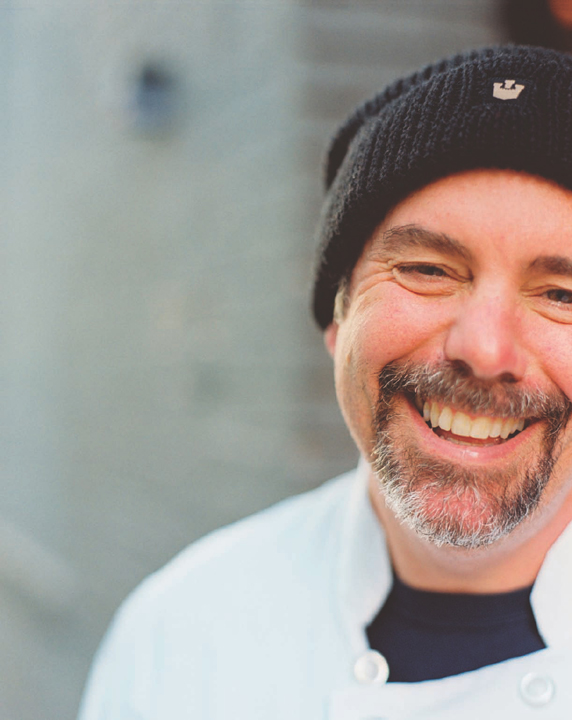
INTRODUCTION
A little about me
I GREW UP IN RESTAURANT KITCHENS . Honestly. From the time I was fifteen and washing dishes in a Jewish deli in Jersey until today, my entire life has been spent wearing kitchen whites. My chosen trade has allowed me opportunities I never thought possible. Ive worked in some of the best restaurants in the country, and now, with my partners, Doug Washington and my brother, Steven Rosenthal, I own three restaurants in San Francisco and one in Portland, Oregon. Cooking has taken me places I never dreamed of. Ive eaten food at roadside stands in Thailand and grand brasseries in Paris, sampled world-class smoked pork in rural Kansas and Iberian pork fat on the Catalan coast of Spain. But theres one place cooking never took me, and thats home.
Ive survived much of the last thirty-five years on staff meals. The last thing I wanted to do after a double shift on the hot line was to go home and cook. But more recently things have changed. After establishing Town Hall, getting Salt House off the ground, and laying the groundwork for Anchor & Hope, I realized I was becoming a restaurateur. With each project, I was moving a little bit further away from the visceral pleasures of the kitchen. The less I cooked at work, the more I missed the simple act of cooking, of using a set of skills to create something memorable and delicious.





